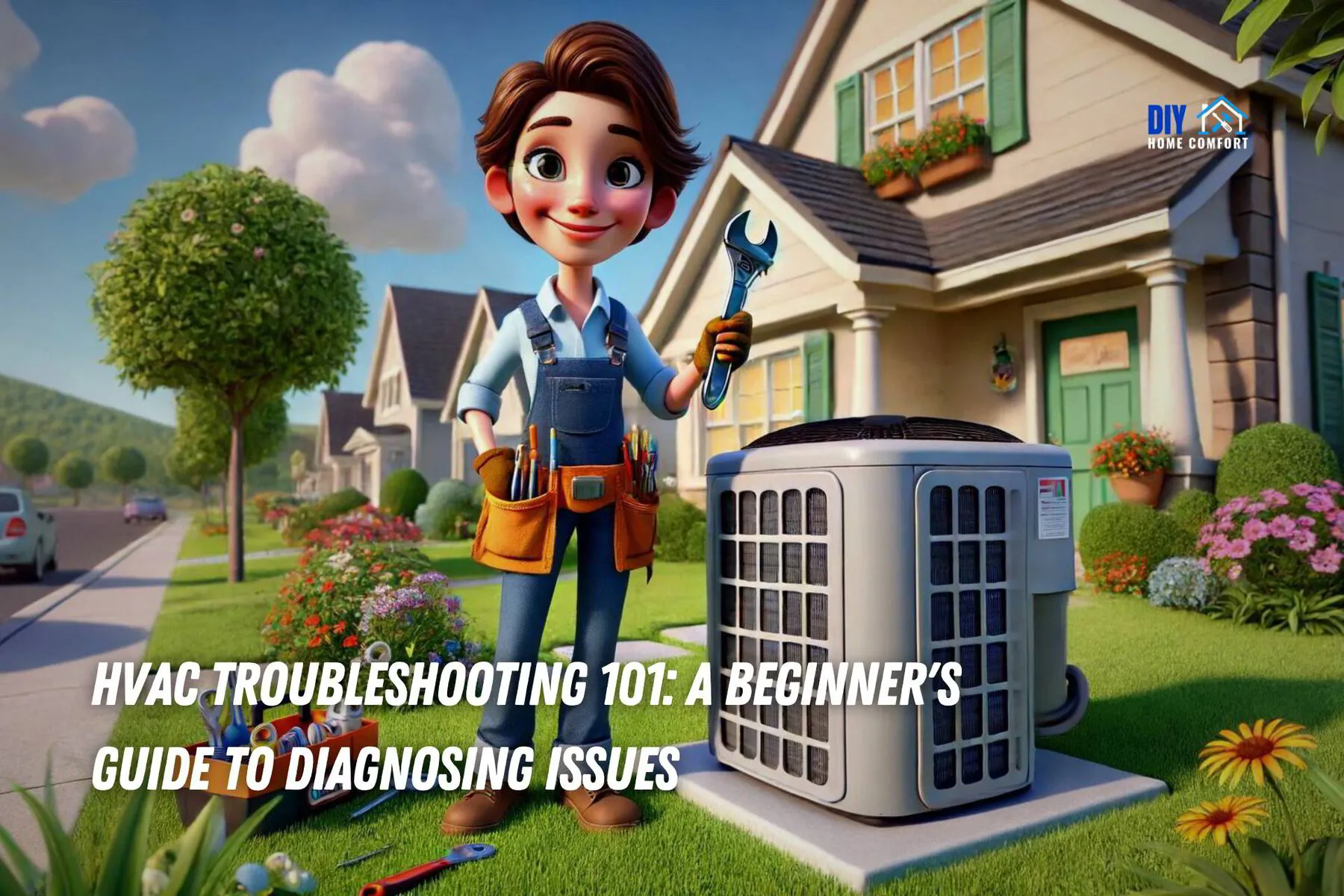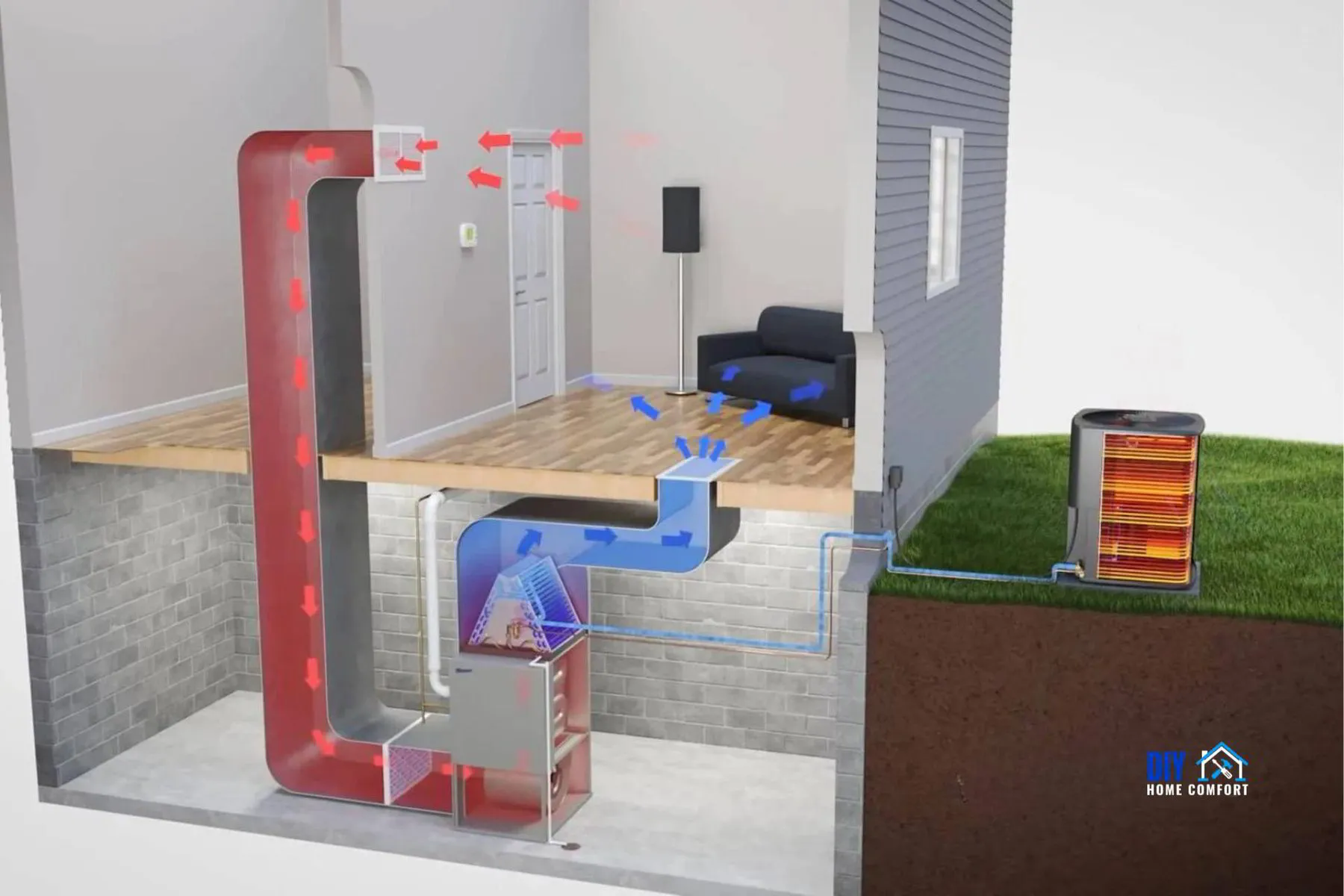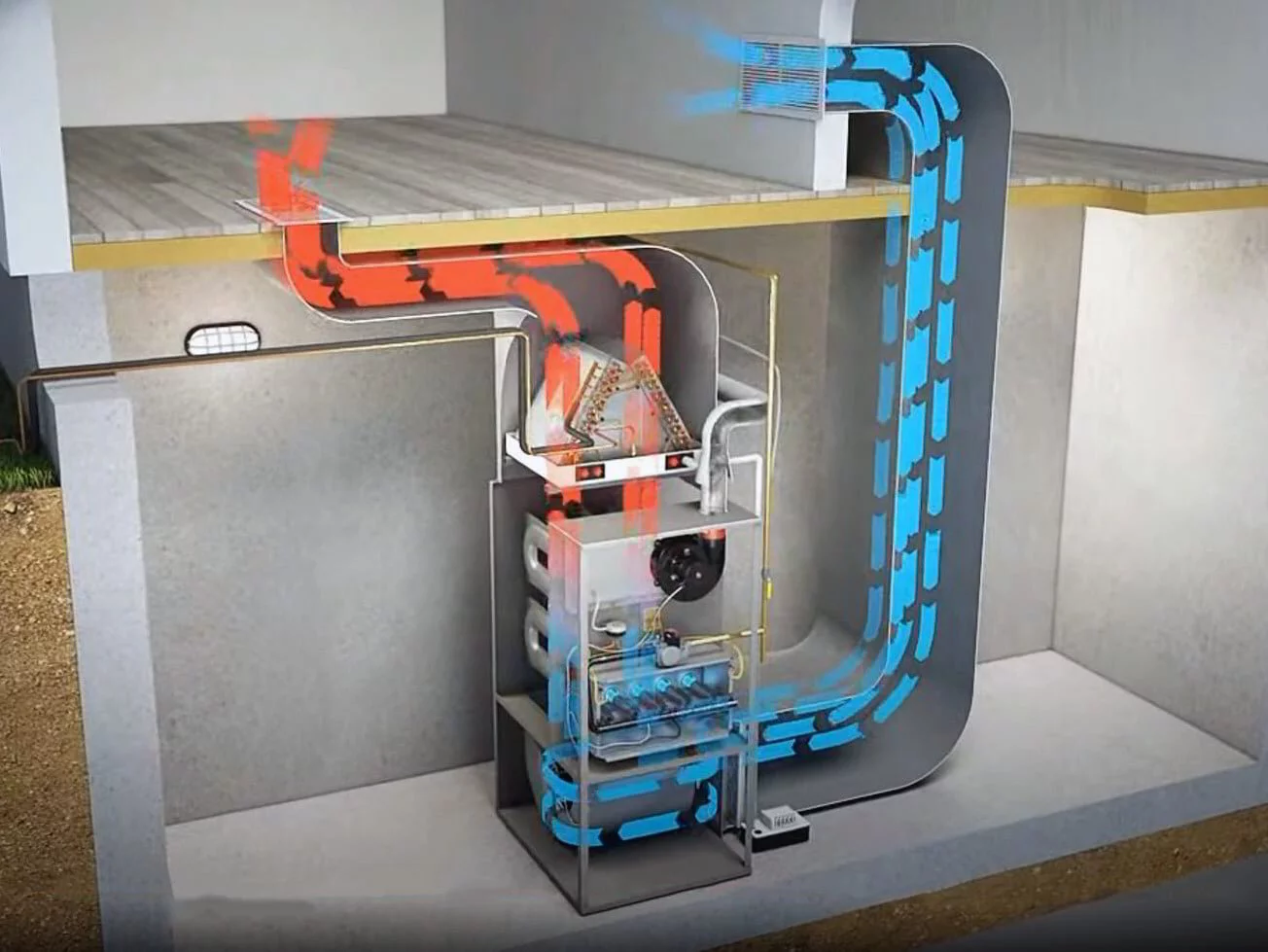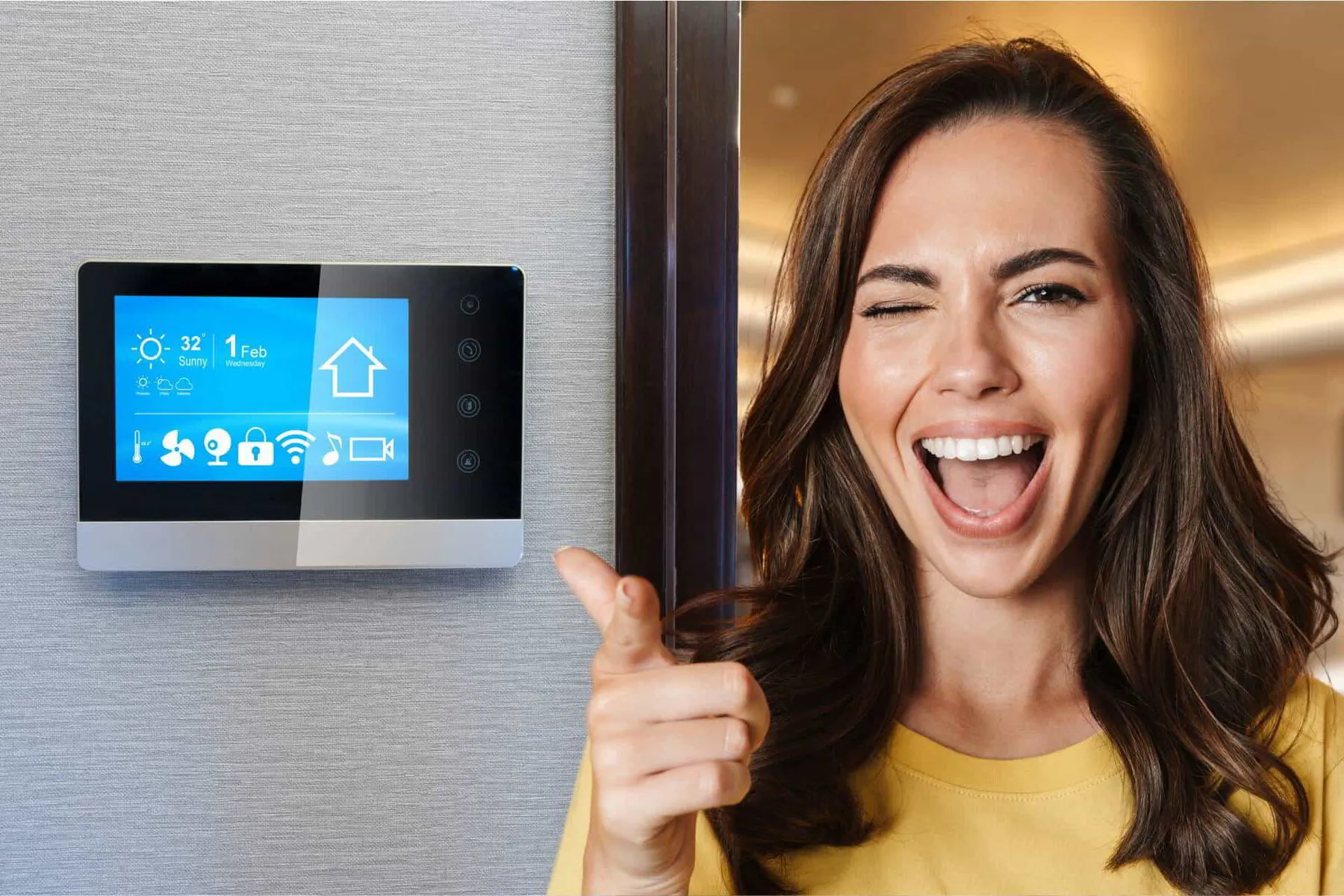Maintaining a comfortable home environment is crucial, and knowing how to troubleshoot your HVAC system plays a significant role. This guide is designed to help homeowners navigate common HVAC problems with confidence. HVAC troubleshooting involves identifying and resolving issues within your heating, ventilation, and air conditioning systems.
Regular HVAC maintenance is essential for improving air quality, preventing inefficiency, and maintaining airflow in the vents. It’s an essential skill that can save you time and money while ensuring your home remains cozy and efficient.
We’ll cover everything from basic HVAC components and common problems to practical HVAC troubleshooting and preventive maintenance tips. Let’s dive in and empower you with the knowledge to keep your HVAC system running smoothly.
Getting to Know Your HVAC System
Main Components of an HVAC System
- Furnace: Heats the air and distributes it throughout the home. Think of it as a large heater that keeps you warm in winter.
- Air Conditioner: Cools the air and removes humidity. Imagine it as a giant refrigerator that cools your home in summer.
- Heat Pump: Provides heating and cooling by transferring heat between indoor and outdoor air. It’s like a versatile appliance that works as a heater and an air conditioner.
- Thermostat: Acts as the control center, regulating the temperature by turning the cooling and heating system on or off. It’s like a remote control for your home’s climate.
- Ductwork: Network of tubes distributing heated or cooled air to different rooms. Think of it as the veins of your HVAC system, delivering comfort to every part of your home.
How Your Heating and Cooling System Works
Understanding how these components work together is essential for effective troubleshooting. An HVAC system keeps your home comfortable by switching between heating and cooling cycles.
In heating mode, the furnace or heat pump warms the air, which is then distributed through the ductwork.
In cooling mode, the air conditioner or heat pump cools the air and removes humidity. The thermostat acts as the control center, turning the system on or off based on the set temperature.
Regular maintenance and checking these components can prevent most problems and ensure efficient operation.
Common HVAC Problems and Symptoms
No Cooling or Heating
One common issue with HVAC systems is the lack of cooling or heating. Several factors can cause this:
- Incorrect Thermostat Settings: Ensure the thermostat is set to the correct mode (heating or cooling) and the desired temperature.
- Power Problems: Check if the system is receiving power. Inspect the circuit breaker and ensure it hasn’t tripped.
- Clogged Filters: A dirty or clogged air filter restricts airflow, limits cooling ability, and strains the system. Replace filters regularly to maintain proper airflow.
✅ Troubleshooting Tips:
- Verify thermostat settings and battery.
- Reset the circuit breaker if necessary.
- Inspect and replace air filters.
Unusual Noises
HVAC systems can make unusual noises that indicate potential problems:
- Banging: Often caused by loose or broken parts within the unit.
- Rattling: Could indicate debris in the system or loose screws.
- Whistling: Usually due to airflow restrictions from dirty filters or ductwork issues.
✅ Addressing Noises:
- Turn off the system and inspect for loose parts or debris.
- Tighten any loose screws.
- Replace or clean filters to improve airflow.
Unusual noises can also stem from issues within the heating system, which may require professional inspection.
Weak Airflow
Weak airflow is another common issue and can stem from:
- Ductwork Problems: Leaks or blockages in the ducts reduce airflow. To maintain healthy air flow, ensure that HVAC vents, ducts, and grills are free from obstructions like furniture, plants, and debris.
- Dirty Filters: Clogged filters restrict air movement.
- Fan Issues: The blower fan may be malfunctioning.
✅ Solutions:
- Inspect ducts for leaks or obstructions.
- Replace or clean filters regularly.
- Check the blower fan for proper operation.
Bad Odors
Foul odors from your comfort system can be caused by:
- Mold: Growth inside the ducts or unit due to moisture.
- Dust: Accumulation within the system.
- Mechanical Issues: Burning smells might indicate electrical problems.
✅ Eliminating Odors:
- Inspect and clean ducts to remove mold and dust.
- Replace filters regularly.
- Contact a professional if you detect burning smells.
Basic Troubleshooting Steps
Checking the Thermostat
To ensure your thermostat is functioning correctly, follow these steps:
- Verify Settings: Check that the thermostat is set to the correct mode (heating or cooling) and that the temperature is set to your desired level.
- Battery Status: If your thermostat runs on batteries, check and replace them if necessary. A low battery can cause the thermostat to malfunction.
- Calibrate the Thermostat: Ensure it is level and not placed in direct sunlight or near heat sources, as these can affect its readings.
✅ Troubleshooting Tips:
- If the thermostat screen is blank, check the power source.
- For programmable thermostats, ensure the schedule settings are correct.
- If the system still doesn't respond, consider resetting the thermostat according to the manufacturer's instructions.
Inspecting Air Filters
Clean air filters are crucial for efficient HVAC operation:
- Importance: Dirty filters restrict airflow, reduce efficiency, and can lead to system breakdowns.
- Inspection: Locate your HVAC system's air filter. Remove it and hold it up to light; if you can't see through it, it needs cleaning or replacement.
- Cleaning/Replacement: Depending on the type, either clean the filter with water and let it dry entirely or replace it with a new one.
✅ Tips:
- Check filters every 1-3 months, more frequently if you have pets or allergies.
- Always turn off the HVAC system before removing filters.
Examining Circuit Breakers and Power Supply
To ensure your HVAC system is receiving power:
- Check Circuit Breakers: Locate your home's electrical panel. Identify the breaker for the HVAC unit and see if it has tripped. If so, reset it by switching it off and then back on.
- Power Supply: Ensure the unit is plugged in and that any switches controlling the unit's power are turned on.
✅ Steps:
- If the breaker trips again immediately, an electrical issue might require professional assistance.
- Confirm that any external power switches near the HVAC unit are in the "on" position.
Inspecting the Outdoor Unit
✅ Regular inspection of the outdoor unit ensures proper operation:
- Clear Debris: Remove any leaves, dirt, or debris around the unit. This ensures good airflow and prevents overheating.
- Check for Damage: Inspect the unit for any visible signs of damage, such as bent fins or loose parts.
- Ensure Airflow: Maintain at least 2 feet of clearance around the unit for optimal airflow.
When to Call a Professional
Recognizing Complex Issues
Specific HVAC problems require professional expertise. If your system is experiencing persistent issues such as frequent cycling, uneven heating or cooling, or unexplained increases in energy bills, it's time to call a professional.
Additionally, if you encounter refrigerant leaks, electrical problems, or system components that aren't functioning despite basic troubleshooting, these are signs that the issue is beyond DIY repair. Professional HVAC technicians have the tools and knowledge to diagnose and fix complex problems safely and efficiently.
🛑 Safety Concerns
Safety is paramount when dealing with HVAC systems. Professionals should handle issues involving gas leaks, electrical faults, or burning smells immediately.
These problems pose significant risks, including fire hazards and carbon monoxide poisoning. Attempting to fix these issues without proper training can be dangerous. Always contact a professional to ensure your unit is repaired safely and correctly, protecting your home and health.
Preventive Maintenance Tips
Regular Maintenance Schedule
Maintaining a regular maintenance schedule for your HVAC system is crucial for its longevity and efficiency. Aim to have a professional inspect your system twice a year—once before the heating season and once before the cooling season.
Regular maintenance helps identify potential issues before they become costly repairs, ensures optimal performance, and can reduce energy bills. Routine check-ups include cleaning, inspecting components, and tuning up the system, which can prevent breakdowns and extend the life of your system.
DIY Maintenance Tasks
Homeowners can perform several simple maintenance tasks to keep their HVAC system in good condition:
- Cleaning Filters: Check and clean or replace filters every 1-3 months to ensure proper airflow.
- Checking the condensate drain line: Regularly inspect the condensate drain for clogs and clean it as necessary.
- Checking the Thermostat: Ensure the thermostat is set correctly and the batteries are functional.
- Inspecting the Outdoor Unit: Remove debris, clean the unit, and ensure precise airflow.
- Visual Inspections: Look for signs of wear or damage in the system and ducts.
Regularly performing these tasks can help maintain your HVAC system's efficiency and prevent minor issues from becoming major problems.
Final Thoughts on HVAC Troubleshooting
We covered essential troubleshooting steps, including checking the thermostat, inspecting filters, examining circuit breakers, and inspecting the outdoor unit. Understanding common problems like no cooling or heating, unusual noises, weak airflow, and foul odors helps diagnose issues effectively. Regular maintenance is crucial to keep your system running efficiently.
Being proactive about HVAC maintenance can prevent most issues and ensure your system operates efficiently. Regular checks and cleaning can also save you from costly repairs and extend the life of your HVAC system. Contact a professional HVAC technician for regular check-ups and to handle complex issues.
Stay ahead of HVAC issues by scheduling regular professional check-ups and following our DIY maintenance tips. For more in-depth guides, check out our other HVAC articles to keep your system in top condition year-round.
Scott Harding
Scott is the main author of DIY Home Comfort. He's also an experienced HVAC technician that enjoys home renovation and spending time with his family. You can find out more about him here.





